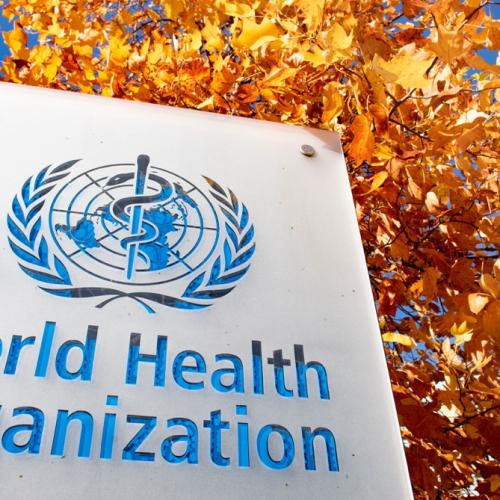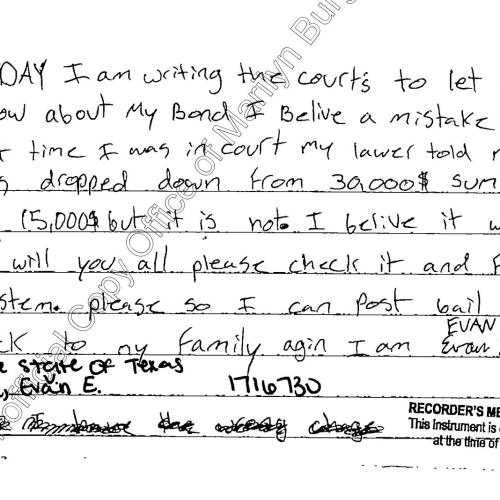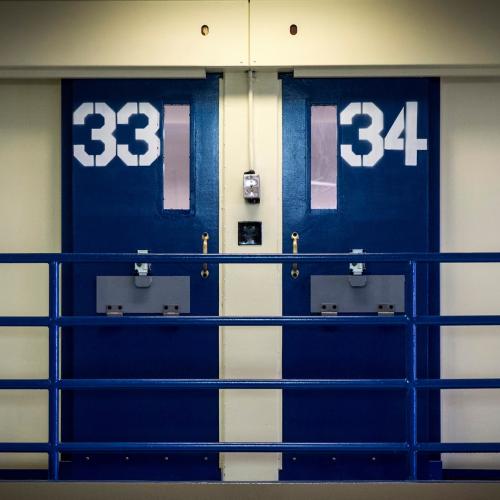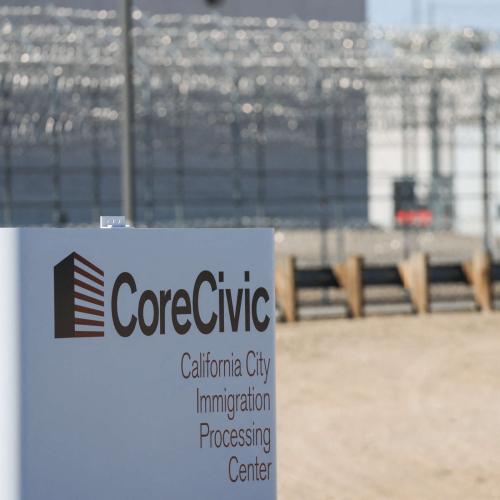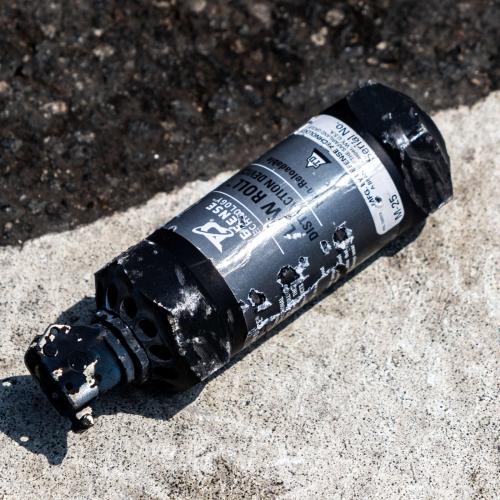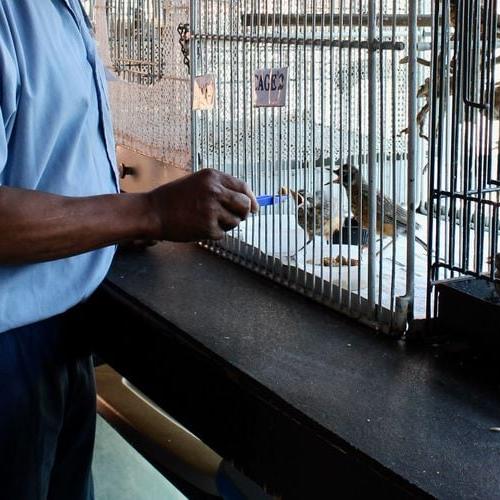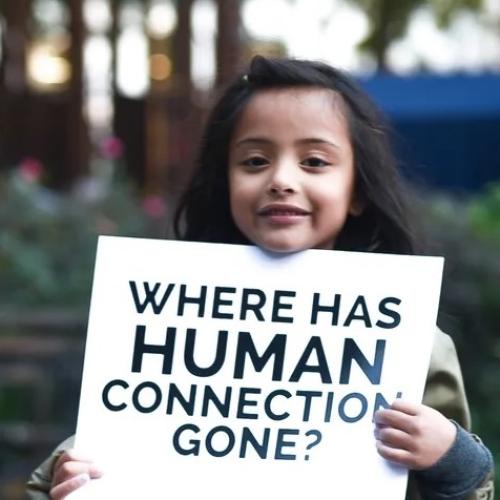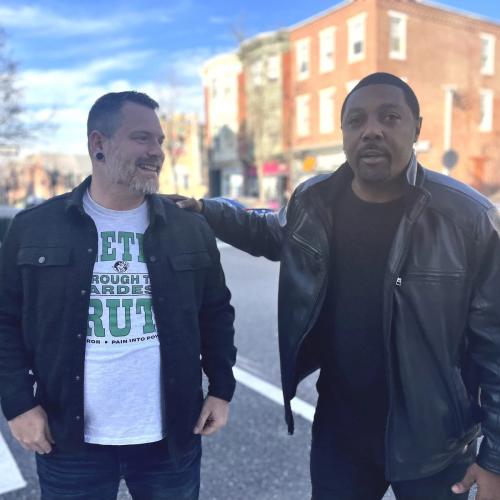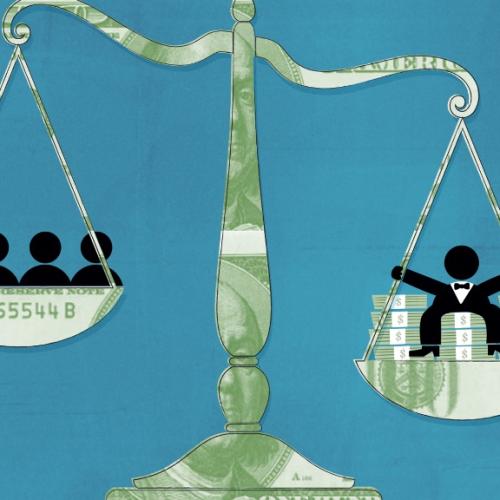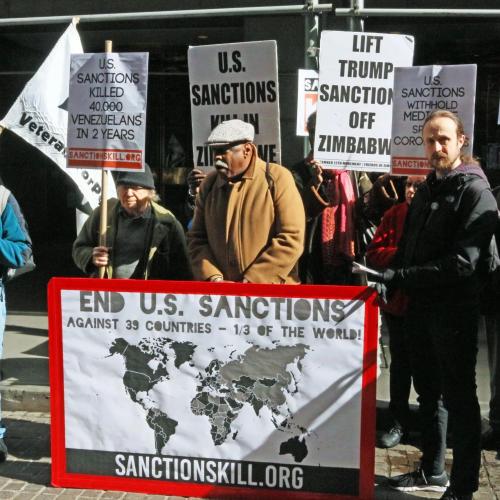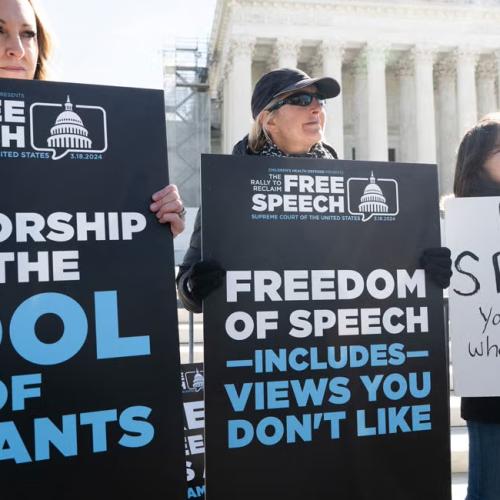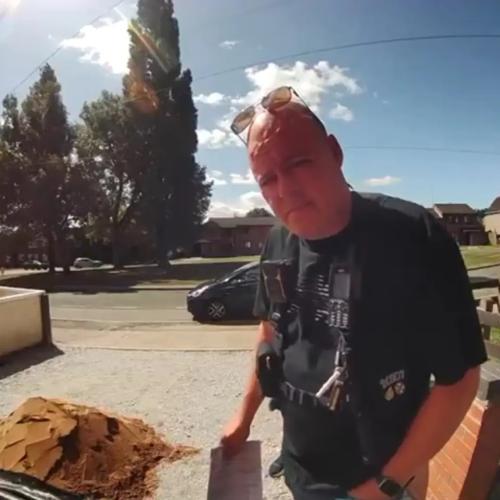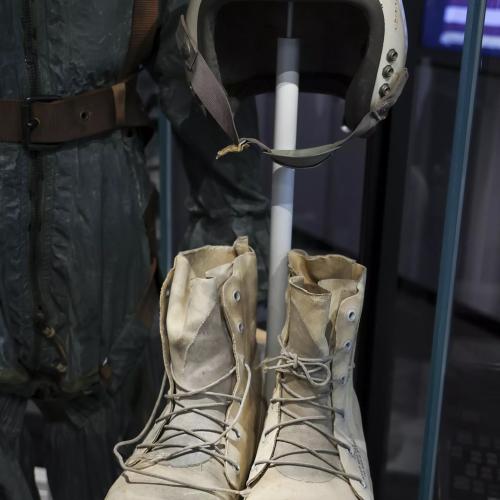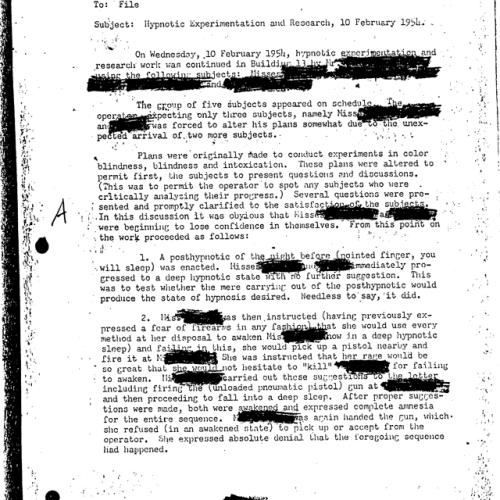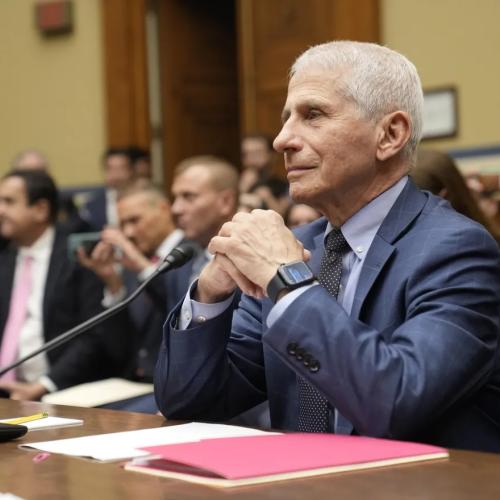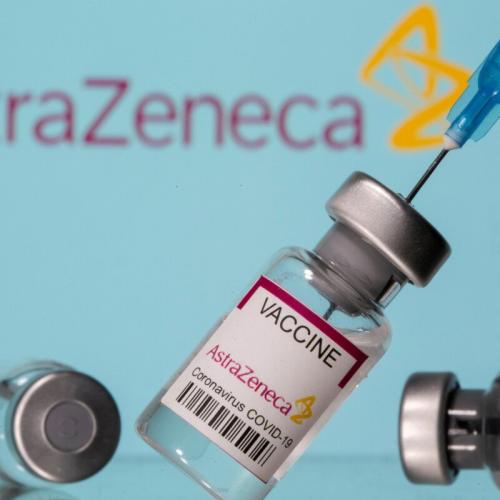Prison System Corruption News Articles
Below are key excerpts of revealing news articles on prison system corruption from reliable news media sources. If any link fails to function, a paywall blocks full access, or the article is no longer available, try these digital tools.
The US criminal justice system is a broken machine that wrongfully convicts innocent people, sentencing thousands of people to prison or to death for the crimes of others, as a new study reveals. The University of Michigan law school and Northwestern University have compiled a new National Registry of Exonerations a database of over 2,000 prisoners exonerated between 1989 and the present day, when DNA evidence has been widely used to clear the names of innocent people convicted of rape and murder. Of these, 885 have profiles developed for the registry's website, exonerationregistry.org. The details are shocking. Death row inmates were exonerated nine times more frequently than others convicted of murder. One-fourth of those exonerated of murder had received a death sentence, while half of those who had been wrongfully convicted of rape or murder faced death or a life behind bars. Ten of the inmates went to their grave before their names were cleared. The leading causes of wrongful convictions include perjury, flawed eyewitness identification and prosecutorial misconduct. "The most important thing we know about false convictions is that they happen and on a regular basis Most false convictions never see the light of the day," said University of Michigan law professors Samuel Gross and Michael Shaffer, who wrote the study. "Nobody had an inkling of the serious problem of false confessions until we had this data," said Rob Warden, executive director of the Center on Wrongful Convictions at Northwestern University.
Note: For key reports from major media sources on the injustices and corruption of the prison-industrial complex, click here.
On Bastoy, an island 46 miles south of Oslo, [125] residents live in brightly colored wooden chalets, spread over one square mile of forest and gently sloping hills. They go horseback riding and throw barbecues, and have access to a movie theater, tanning bed and, during winter, two ski jumps. Despite all its trappings, Bastoy island isn't an exclusive resort: it's a prison. Bastoy's governor ... describes it as the world's first human-ecological prison a place where inmates learn to take responsibility for their actions by caring for the environment. Prisoners grow their own organic vegetables, turn their garbage into compost and tend to chickens, cows, horses and sheep. The prison generally emphasizes trust and self-regulation: Bastoy has no fences, the windows have no bars, and only five guards remain on the island after 3 p.m. In an age when countries from Britain to the U.S. cope with exploding prison populations by building ever larger and, many would say, ever harsher prisons, Bastoy seems like an unorthodox, even bizarre, departure. But Norwegians see the island as the embodiment of their country's long-standing penal philosophy: that traditional, repressive prisons do not work, and that treating prisoners humanely boosts their chances of reintegrating into society. Norway's system produces overwhelmingly positive results. Within two years of their release, 20% of Norway's prisoners end up back in jail. In the U.K. and the U.S., the figure hovers between 50% and 60%. Of course, Norway's ... prison roll lists a mere 3,300 inmates, a rate of 70 per 100,000 people, compared with 2.3 million in the U.S., or 753 per 100,000 the highest rate in the world.
Note: Why aren't other countries taking heed of Norway's excellent example? Part of the reason is that some companies make massive profits from the prison system. For more on this, click here.
One in every 31 adults, or 7.3 million Americans, is in prison, on parole or probation, at a cost to the states of $47 billion in 2008, according to a new study. Criminal correction spending is outpacing budget growth in education, transportation and public assistance, based on state and federal data. Only Medicaid spending grew faster than state corrections spending, which quadrupled in the past two decades, according to [a new report] by the Pew Center on the States, the first breakdown of spending in confinement and supervision in the past seven years. The increases in the number of people in some form of correctional control occurred as crime rates declined by about 25 percent in the past two decades. As states face huge budget shortfalls, prisons, which hold 1.5 million adults, are driving the spending increases. Pew researchers say that as states trim services like education and health care, prison budgets are growing. Those priorities are misguided, the study says. States are looking to make cuts that will have long-term harmful effects, said Sue Urahn, managing director of the Pew Center on the States. Corrections is one area they can cut and still have good or better outcomes than what they are doing now. About $9 out of $10 spent on corrections goes to prison financing (that includes money spent to house 780,000 people in local jails). One in 11 African-Americans, or 9.2 percent, are under correctional control, compared with one in 27 Latinos (3.7 percent) and one in 45 whites (2.2 percent).
Note: Crime is down 25%, yet prison spending is 400% of what it was 20 years ago. Is there anything strange here? The prison-industrial complex is mighty big and in many ways mighty corrupt.
New York City is an expensive place to live for just about everyone, including prisoners. The city paid $167,731 to feed, house and guard each inmate last year, according to a study the Independent Budget Office released this week. It is troubling in both human terms and financial terms, Doug Turetsky, the chief of staff for the budget office, said on Friday. With 12,287 inmates shuffling through city jails last year, he said, it is a significant cost to the city. by nearly any measure, New York City spends more than every other state or city. The Vera Institute of Justice released a study in 2012 that found the aggregate cost of prisons in 2010 in the 40 states that participated was $39 billion. The annual average taxpayer cost in these states was $31,286 per inmate. New York State was the most expensive, with an average cost of $60,000 per prison inmate. The cost of incarcerating people in New York Citys jails is nearly three times as much. 83 percent of the expense per prisoner came from wages, benefits for staff and pension costs. Some 76 percent of the inmates in the city were waiting for their cases to be disposed. The wait times have grown even as the number of felonies committed in the city has declined. Since 2002, the time spent waiting for cases to be disposed of has gone to 95 days, from 76 days, [former city correction and probation commissioner Michael] Jacobson said.
Note: This CNN chart shows that most states spend two to three times as much on their prison inmates than they do on students in school. What does that say about our priorities? For more along these lines, see concise summaries of deeply revealing prison system corruption news articles from reliable major media sources.
The U.S. federal-prison population swelled from 24,000 prisoners in 1980 to 219,000 in 2013. And federal prisons are just the tip of the iceberg factor in state prisons and local jails, and there are 2.2 million people locked up in this country. The U.S. Sentencing Commission ... is charged with setting and adjusting the detailed schedule of penalties for those convicted of federal crimes. In April 2014, the commission approved a reduction in sentences for certain drug crimes going forward. In his final months in office, President Obama has focused more on the need for criminal-justice reform. He has used the executive power of clemency to commute some of the most egregiously unfair sentences of 89 federal drug convicts. But a handful of pardons don't amount to much when there are hundreds of thousands of federal prisoners. Nearly half of federal inmates are serving time for drug crimes. Of those, 60 percent were subject to mandatory minimums when they were sentenced. Stephanie George was a 26-year-old mother of three when she was convicted on drug-conspiracy charges because the man she was dating had kept drugs and money in her house. Under the federal three-strikes-and-you're-out law, she was sentenced to life in prison. George was locked up nearly 18 years before Obama commuted her sentence. One of her sons died shortly before her release. She says she doesn't think most politicians consider the costs a mandatory-minimum sentence brings.
Note: For more along these lines, see concise summaries of deeply revealing prison system corruption news articles from reliable major media sources.
New research shows the meditative exercise improves mental health, reduces stress and can prevent reoffending. The power of yoga to change [a prisoner's] life is backed by two Swedish studies that found it may reduce reoffending. The new study, led by Professor Nra Kerekes at University West, Trollhtten, in Sweden, and published last week in Frontiers in Psychiatry, found that 10 weeks of regular yoga can lead to a significant reduction in obsessive-compulsive and paranoid thinking, which in turn, say researchers, can make reoffending less likely. This effect is specific to yoga, and not to exercise in general, they found. It can also lead to a decrease in somaticisation (mental distress leading to physical symptoms such as breathing problems, heart pains and stomach upsets). The study of 152 volunteers in nine medium- and high-security prisons in Sweden builds on a 2017 study of the same volunteers that showed that yoga improved stress levels, concentration, sleep quality, psychological and emotional wellbeing, as well as reducing aggression and antisocial behaviour. A Prison Service spokeswoman says: Research shows activities like this can make prisoners less likely to reoffend, keeping the public safer. She was unable to explain why, given this evidence, it wasnt government policy to make yoga available to all prisoners, but said it was up to individual prison governors to decide which activities to offer.
Note: Explore a treasure trove of concise summaries of incredibly inspiring news articles which will inspire you to make a difference.
From the mid-1970s to the mid-80s, Americas incarceration rate doubled, from about 150 people per 100,000 to about 300 per 100,000. From the mid-80s to the mid-90s, it doubled again. By 2007, it had reached a historic high of 767 people per 100,000. In absolute terms, Americas prison and jail population from 1970 until today has increased sevenfold, from some 300,000 people to 2.2 million. In 2000, one in 10 black males between the ages of 20 and 40 was incarcerated 10 times the rate of their white peers. At a cost of $80 billion a year, American correctional facilities are a social-service program providing health care, meals, and shelter for a whole class of people. An authoritative report issued last year by the National Research Council concluded, the current U.S. rate of incarceration is unprecedented by both historical and comparative standards. Even once an individual is physically out of prison, many do not elude its grasp. In 1984, 70 percent of all parolees successfully completed their term without arrest and were granted full freedom. In 1996, only 44 percent did. As of 2013, 33 percent do. Deindustrialization had presented an employment problem for Americas poor and working class of all races. Prison presented a solution: jobs for whites, and warehousing for blacks. Mass incarceration widened the income gap between white and black Americans, writes [historian] Heather Ann Thompson ... because the infrastructure of the carceral state was located disproportionately in all-white rural communities.
Note: The article above provides a detailed history of some U.S. policies that created the corrupt prison industry.
Harvey Hill wouldn’t leave John Finnegan’s front yard. He stood in the pouring rain, laughing at the sky, alarming his former boss’ wife. Finnegan dialed 911. “He needs a mental evaluation,” the landscaper recalls telling the arriving officer. Instead, Hill was charged with trespassing and jailed. At the Madison County Detention Center ... guards tackled the 36-year-old, pepper sprayed him and kicked him repeatedly in the head. After handcuffing him, two guards slammed Hill into a concrete wall, previously unpublished jail surveillance video shows. They led him to a shower, away from the cameras, and beat him again, still handcuffed, a state investigation found. Video showed Hill writhing in pain in the infirmary, where he was assessed by a licensed practical nurse but not given medication. Hill was sent straight to an isolation cell. Within hours, he was dead. And he had a lot of company. Hill’s is one of 7,571 inmate deaths Reuters documented in an unprecedented examination of mortality in more than 500 U.S. jails from 2008 to 2019. Death rates have soared in those lockups, rising 35% over the decade ending last year. Casualties like Hill are typical: held on minor charges and dying without ever getting their day in court. At least two-thirds of the dead inmates identified by Reuters, 4,998 people, were never convicted of the charges on which they were being held. Reuters is making the full data it gathered available to the public here.
Note: For more along these lines, see concise summaries of deeply revealing news articles on prison system corruption from reliable major media sources.
The surveillance video taken from outside Jeffrey Epstein's jail cell on the day of his first apparent suicide attempt has been permanently deleted, federal prosecutors said. Epstein, the disgraced financier who was facing federal sex-trafficking charges, was found semiconscious in his cell at the Metropolitan Correctional Center, or MCC, in New York around 1:27 a.m. on July 23. But that video is now gone because MCC officials mistakenly saved video from a different floor of the federal detention facility. The FBI made the discovery last week while reviewing a copy of the video provided by MCC officials. "After reviewing the video, it appeared to the government that the footage contained on the preserved video was for the correct date and time, but captured a different tier than the one where [the cell housing Epstein and his cellmate] was located. The filing was made in a case involving Nicholas Tartaglione ... who was Epstein's cellmate on the day of the incident. The July incident was investigated as a possible suicide attempt, assault or ruse by Epstein to get himself transferred to a different facility. Tartaglione's attorney, as part of an effort to exonerate his client, asked the jail to preserve video from outside the cell. The MCC agreed, but "the MCC computer system listed a different, incorrect cell for Tartaglione," prosecutors said in the court filing. A backup video system was in place, but the requested video wasn't available because of unspecified "technical errors," the court filing says.
Note: Just a little bit suspicious... For more along these lines, see concise summaries of deeply revealing news articles on Jeffrey Epstein from reliable major media sources.
Over the last few weeks, the Rodney Reed case has ignited a firestorm of interest, as celebrities, activists, and politicians worked to delay his Nov. 20 execution on the basis that he might be innocent. According to the National Registry of Exonerations (NRE), since 1989, 2,515 men and women have been exonerated after proving their innocence. In total, among all known exonerees, Americans have shelled out a staggering $4.12 billion to incarcerate innocent men and women since 1989. Thats largely money spent on trials, and the cost of housing inmates in prison. According to the Bureau of Prisons, in the fiscal year 2017, the average cost to house a prisoner was over $36,000 a year in federal facilities. But black men make up the majority of those wrongfully convicted approximately 49%. And since 1989, taxpayers have wasted $944 million to incarcerate black men and women that were later found to be innocent. That number climbs to $1.2 billion when including Hispanic men and women. On average, from the time a person enters the criminal justice system until they are exonerated, $1.26 million is spent per inmate who is facing the death penalty. The total sum $4.12 billion spent on all known exonerees also includes $2.2 billion that taxpayers have paid the innocent in compensation since 1989 for the time they were imprisoned, according to a 2018 NRE study. But while a large sum, only 44% of exonerees have ever received compensation.
Note: Read also how thousands have been sentenced to life in prison for non-violent crimes. For more along these lines, see concise summaries of deeply revealing news articles on prison system corruption from reliable major media sources.
When Joe Biden took office ... he promised an overhaul of the federal Bureau of Prisons (BOP). Biden inherited Michael Carvajal as BOP director. Carvajal ... began as an entry-level prison guard, worked his way up into administration, became a warden, and finally made his way to BOP headquarters. Carvajal resigned in 2022 after more than 100 BOP officers were arrested for, or convicted of, serious crimes during his short tenure, including smuggling drugs and cell phones into prisons to sell to prisoners, theft from prison commissaries, committing violence against prisoners, and even one warden running a “rape club,” where he and other officials, including the prison chaplain, raped female prisoners at will. Carvajal finally resigned after Congress learned of the “rape club” and Rep. Jerry Nadler (D-NY), the chairman of the House Judiciary Committee, demanded that he leave. Carvajal’s problem was obvious from the beginning. He brought literally no outside expertise to the job. He had never worked anywhere in his adult life other than the BOP. There would be no bold, new programs, no new ideas for reducing recidivism, no move to train prisoners to lead productive lives. According to Peter Mosques, a criminal justice professor of John Jay College, the BOP is ... an employment agency for otherwise unemployable white men with no education and no outside job experience, many of whom washed out of the military or the local police academy.
Note: John Kiriakou is a whistleblower, former CIA counter-terrorism officer, and former senior investigator on the Senate Foreign Relations Committee. For more along these lines, see concise summaries of deeply revealing news articles on prison system corruption from reliable major media sources.
As a teenager almost 20 years ago, Jeffery Christian was sent to a juvenile detention center in southern Illinois. He was abused by multiple staff over the course of several years, starting just a few days into his detention. According to a lawsuit filed last week in the Illinois Court of Claims, his mother reported at least some of the alleged abuse to leadership but no one followed up. He is one of more than 90 people who sued the state last week, saying they were abused by employees when they were in juvenile detention, some as young as 12 years old. It is the latest in a flurry of legal cases around the country claiming similar sexual misconduct by employees of facilities housing children charged with a crime. The U.S. Justice Department on Wednesday announced an investigation into Kentucky's youth detention facilities. Since the start of the year, there have been lawsuits filed in at least four states, including the one in Illinois. The men and women in the lawsuits allege very similar abuse. Some say they were raped. Others say they were forced to perform oral sex or were inappropriately touched by employees. Some say they were given rewards, like special snacks or extra recreational time, if they complied; others say they were punished for refusing. According to the Sentencing Project, a research and advocacy group, recurring abuse has been documented in state-funded juvenile detention facilities in 29 states and the District of Columbia.
Note: For more along these lines, see concise summaries of deeply revealing news articles on prison system corruption and sexual abuse scandals from reliable major media sources.
Last week, the nation’s largest prison and jail telecom corporation, Securus, effectively defaulted on more than a billion dollars of debt. After decades of preying on incarcerated people and their loved ones with exploitative call rates and other predatory practices that have driven millions of families into debt, Securus is being crushed under the weight of its own. Securus is one of two corporations that dominate roughly 80 percent of the U.S. prison telecom industry. Both companies are owned by private-equity firms: Securus, by Platinum Equity, and ViaPath (previously Global Tel Link), by American Securities. Together, Securus and ViaPath contract with 43 state prison systems and over 800 county jails. Their dominance of the market allows them to routinely charge incarcerated people and their families egregious rates for rudimentary communications services: A 15-minute phone call can run as high as $8.25; a 25-minute video call up to $15; and basic emails as much as $0.50, or more with attachments. The nature of agreements between these telecom providers and correctional agencies often further incentivizes the financial exploitation of the incarcerated, creating profit-sharing kickback schemes that provide prisons and jails with a portion of sales revenue. The ... tactics that brought Securus down—narrative change, policy campaigns, regulatory efforts, and investor activism—offer a roadmap for tackling exploitative corporate profiteers across the prison industry.
Note: For more along these lines, see concise summaries of deeply revealing news articles on prison system corruption from reliable major media sources.
Correctional systems throughout much of Scandinavia are guided by a general set of philosophical principles. In Norway, core values of safety, transparency and innovation are considered fundamental to the idea of creating normality in prison, the feeling that life as part of a community continues. Incarcerated people can wear their own clothes, work in jobs that prepare them for employment and cook their own meals. Cells in Norway are also for a single person – not multiple people, as in most cases in the U.S. Importantly, correctional officers have at least a two-year, university-level education and are directly involved in rehabilitation and planning for the incarcerated person’s re-entry into the world outside of prison. In the U.S., most officers receive just a few weeks of training. Recidivism rates in Scandinavia are low. In Norway ... less than half of people released from prison are rearrested after three years. In Pennsylvania, that figure is closer to 70%. In State Correctional Institution Chester, known as SCI Chester, a medium-security prison located just outside of Philadelphia, a correctional officer-guided team has worked since 2018 to incorporate Scandinavian penal principles into its own institution. Six men in SCI Chester – each sentenced to life in prison – were selected to participate. They then moved on to the new housing unit, which had come to be known as “Little Scandinavia.” SCI Chester shows that it is, in fact, possible to adapt Scandinavian-style penal philosophies.
Note: Explore a treasure trove of concise summaries of incredibly inspiring news articles which will inspire you to make a difference.
In July 2019, Jeffrey Epstein, already a convicted sex offender, was arrested and charged with sex trafficking by federal prosecutors. On August 10, Epstein was found dead in his federal jail cell at Manhattan's Metropolitan Correctional Center (MCC). The New York City Medical Examiner's Office ruled Epstein's death a suicide by hanging, but a forensic pathologist who observed the four-hour autopsy ... tells 60 Minutes the evidence released so far points more to murder than suicide in his view. Dr. Michael Baden's key reason: the unusual fractures he saw in Epstein's neck."There were fractures of the left, the right thyroid cartilage and the left hyoid bone," Baden said. "I have never seen three fractures like this in a suicidal hanging." The night before his death, Epstein's cellmate was released. According to court documents, "no new cellmate was assigned" before he died, even though he was required to have one. That night, federal prosecutors say, "Epstein was escorted into his cell by Tova Noel at approximately 7:49 p.m." Noel and Michael Thomas, the two guards who were working the overnight shift in Epstein's unit, allegedly didn't check on him again until "shortly after 6:30 a.m." the next morning. "So Epstein's taken off suicide watch, the day before he kills himself, his roommate is removed from the cell. The cameras on his tier are not working. The guards fell asleep. It seems almost impossible to think all of those things could happen in that way," [60 Minutes correspondent Sharyn] Alfonsi said.
Note: Not mentioned is that surveillance video from Epstein's first suicide attempt was "accidentally" erased, as reported on NBC News. A revealing five-minute 60 minutes video is available here or at the link above. More photos and information are available on this CBS News webpage. An even deeper analysis can be found on this webpage. For more along these lines, see concise summaries of deeply revealing news articles on Jeffrey Epstein from reliable major media sources.
The closure of five prisons in as many years against the background of a falling crime rate, is the kind of news many governments would give their eye teeth for. The impact could have been even more dramatic if the government had adopted the recommendations of a prison service report published in July, which concluded that eight jails and three youth detention centres will be surplus to requirements by the year 2021. The official figures indicate that recorded crime has been falling for around a decade. Between 2014 and 2015, the most recent year for which statistics are available, recorded crime was down by nearly 5%, according to national statistics office CBS. In total, recorded crime has shrunk by 25% over the past eight years. Crime figures [have] been falling in nearly all western nations this century, but the decline in the Dutch prison population has been spectacular. In 2006 the Netherlands had the second highest number of inmates in Europe with 125 prisoners per 100,000 population. Only the UK, with 145, had a larger share. But by last year the Dutch were down to Scandinavian levels, with 69 out of every 100,000 citizens behind bars. The government says prison closures are inevitable because it costs too much to keep empty cells open. Official forecasts predict that the downward trend in crime will continue, though how far the fall reflects an actual drop in criminal behaviour remains a hotly contested issue.
Note: Few are aware that violent crime rates in the U.S. have dropped to 1/3 of what they were in 1993, yet prison spending continues to skyrocket. Explore a treasure trove of concise summaries of incredibly inspiring news articles which will inspire you to make a difference.
The 13th Amendment to the United States Constitution did not end slavery. In fact, it is the first time the word "slavery" was ever mentioned in the Constitution and it is in this amendment where it is ... given the constitutional protection that has maintained the practice of American slavery in various forms to this very day. It is why, right now, the largest prison strike in American history is about to enter its third week - the men and women inside of those prisons are effectively slaves. Their free or nearly free labor represents, according to Alice Speri, a $2 billion a year industry that employs nearly 900,000 prisoners while paying them a few cents an hour in some states, and nothing at all in others. In addition to work for private companies, prisoners also cook, clean, and work on maintenance and construction in the prisons themselves forcing officials to pay staff to carry out those tasks in response to work stoppages. They cannot run these facilities without us, organizers wrote ahead of the strike. We will not only demand the end to prison slavery, we will end it ourselves by ceasing to be slaves. The entire 13th Amendment ... is just 47 words long. About a third of those words aren't about ending slavery, but are shockingly about how and when slavery could receive a wink and a nod to continue. In essence, the 13th Amendment both banned and justified slavery in one fell swoop. Slavery is legal in prisons.
Note: It's strange to note that very few major media have given any coverage to this important story. For more along these lines, see concise summaries of deeply revealing news articles on corruption in government and in the prison system.
Nico is one of 11 puppies in the Leader Dogs for the Blind Prison Puppies program, trained by 23 inmates at the Macomb Correctional Facility in New Haven. At the ... all-male prison, its common to see inmates toting puppies on leashes through the grounds, eating in the Chow Hall with a lab or golden retriever by their side and passing time with a four-legged cellmate, who takes up a share of the 8-foot-by-11-foot space. Hes with us 24/7, said [Mario] Carines, whos raising Nico with teammate James Fuson. The puppy is a blessing, he said, explaining that since the dogs arrived last summer, the morale of both the inmates and staff has improved. Seeing animals around when the program first began, guys couldnt believe it. I hadnt seen a dog in 22 years, he said. Prison Puppies started in 2002. Leader Dog coordinators noticed a difference in the success rate. Up to 60 percent of puppies raised in prisons become leader dogs, assisting the blind or deaf; the graduation rate of puppies outside prisons is about 45 percent. Many of our dogs raised in correctional facilities go on to ... have long-term successful working careers as guide dogs, said [program coordinator] Melissa Spooner. Prison Puppies is a win-win-win, Spooner said, since it benefits the recipient, Leader Dog and 108 inmates in the voluntary year-long program. In fact, the Bureau of Justice Statistics found only 17 percent of inmates in Prison Puppies return to prison after being released. The national recidivism rate is about 50 percent.
Note: Watch an inspiring short video of this inspiring program.
Privatization [of government functions] often comes with a lack of oversight and a series of abuses. One particularly stunning example is the American prison system, the realities of which should be a national disgrace. Some of those realities are highlighted in a recent lawsuit filed by the American Civil Liberties Union on behalf of prisoners at the East Mississippi Correctional Facility (EMCF). EMCF houses severely mentally ill prisoners, with the supposed intent of providing both incarceration and treatment. Instead, the ACLU contends, the facility, which is operated by private contractors, is rife with horrific abuses. The complaint lists a litany of such horrors, [including]: Rampant rapes. Placing prisoners in solitary confinement for weeks, months or even years at a time. Rat infestations so bad that vermin crawl over prisoners. Many suicide attempts, some successful. Denying or delaying treatment for infections and even cancer. Stabbings, beatings and other acts of violence. Malnourishment and chronic hunger. Officers who deal with prisoners by using physical violence. The [US] prison system is increasingly built and run by for-profit corporations, who have a financial interest in increasing the number of people in prison while decreasing the amount of money it costs to house them. Since 1980, the US prison population has grown by 790%. We have the largest prison population of any nation in the history of the world.
Note: For deeply revealing reports from reliable major media sources on corruption and human rights abuses in prisons, click here.
Most modern justice systems focus on a crime, a lawbreaker and a punishment. But a concept called restorative justice considers harm done and strives for agreement from all concerned the victims, the offender and the community on making amends. And it allows victims, who often feel shut out of the prosecutorial process, a way to be heard and participate. In this country, restorative justice takes a number of forms, but perhaps the most prominent is restorative-justice diversion. There are not many of these programs a few exist on the margins of the justice system in communities like Baltimore, Minneapolis and Oakland, Calif. but, according to a University of Pennsylvania study in 2007, they have been effective at reducing recidivism. Typically, a facilitator meets separately with the accused and the victim, and if both are willing to meet face to face without animosity and the offender is deemed willing and able to complete restitution, then the case shifts out of the adversarial legal system and into a parallel restorative-justice process. All parties the offender, victim, facilitator and law enforcement come together in a forum sometimes called a restorative-community conference. Each person speaks, one at a time and without interruption, about the crime and its effects, and the participants come to a consensus about how to repair the harm done. The methods are mostly applied in less serious crimes, like property offenses in which the wrong can be clearly righted. The processes are designed to be flexible enough to handle violent crime like assault, but they are rarely used in those situations.
Note: This deeply moving and highly educational piece from the New York Times Magazine about the power of restorative justice is well worth reading in its entirety at the link above.
Important Note: Explore our full index to revealing excerpts of key major media news articles on several dozen engaging topics. And don't miss amazing excerpts from 20 of the most revealing news articles ever published.














